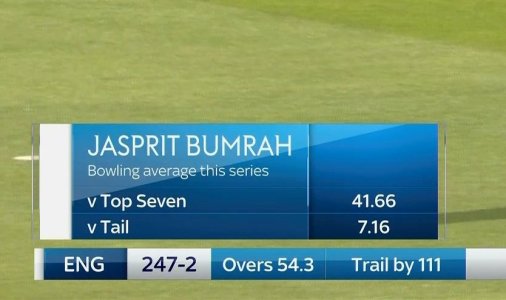In the wake of Joe Root’s rise to No 2 in the all-time Test-run rankings, it appears the former England international is not so impressed

www.telegraph.co.uk
Kevin Pietersen did not often bowl, although he first came to English attention when he represented KwaZulu-Natal as an off-spinner on England’s 1999-2000 tour of South Africa, but he has delivered some bouncers at Joe Root.
Root in the course of his
150 at Old Trafford rose to second place in the all-time list of Test run-scorers. But this was not enough to impress Pietersen. Far from it. He declared, like a real old-timer, that batting was twice as hard back in his day.
“Don’t shout at me but batting these days is way easier than 20/25 years ago!” Pietersen posted on X. “Probably twice as hard back then.”
Pietersen names 22 bowlers of his time and dares the cricket follower of today to name 10 to compare with them.
Of his contemporaries, he nominates four Australians: Glenn McGrath, Brett Lee, Jason Gillespie and Shane Warne; four Pakistanis in Waqar Younis, Shoaib Akhtar, Wasim Akram and Mushtaq Ahmed; three Indians in Anil Kumble, Javagal Srinath and Harbhajan Singh; three New Zealanders in Shane Bond, Chris Cairns and Daniel Vettori; three South Africans in Allan Donald, Shaun Pollock and, bizarrely, Lance Klusener but not Dale Steyn; two Sri Lankans in Chaminda Vaas and Muttiah Muralitharan; and two West Indians in Curtly Ambrose and Courtney Walsh.
A single England bowler was nominated by Pietersen in Darren Gough. His colleagues in the Ashes-winning attack of 2005 seem not to have impressed him.
Most of the variable factors in Test cricket have changed little in this century: balls, pitches, DRS and so forth. The biggest change has been the impact of T20 – the
first professional T20 tournament was started in England in 2003, by when Pietersen was starting out for Nottinghamshire.
My interpretation, therefore, would be that Pietersen is wrong to say that the standard of pace bowling has gone down. The finest seamers today are a match for their equivalents of “20/25 years ago”.
“Please name me 10 modern bowlers that can compare to the names above,” Pietersen goes on to say.
Well, in that case, Australia’s Pat Cummins, Mitchell Starc, Josh Hazlewood and Nathan Lyon can all compare; South Africa’s Kagiso Rabada is up with his forebears, not bowling so fast but moving the ball more; Mark Wood and Jofra Archer have been timed as England’s quickest ever; New Zealand’s Will O’Rourke is a serious customer, as is Jayden Seales, even if West Indies are nowhere near what they were; while a case for Jasprit Bumrah being
rated the best of all time has been made, although he has been down on pace in the Old Trafford Test.
Where Pietersen is right, although he does not spell it out, is that the standard of finger-spin bowling in Test cricket has decreased, while that of wrist-spin has plummeted. And this is where T20 must have had its impact: spinners bowl a higher percentage of the overs in a T20 game than they do in a red-ball or Test match, but it is a different sort of spin: fired in, flat, at the batsman’s legs, denying him room. It is a distant relation of flight and dip and turn and defeating the batsman past either inside or outside edge.
The presence of finger-spinners in international cricket has faded. If the Test match is in Asia, they will have their say all right, but elsewhere? New Zealand and West Indies might not select one at home.
Pakistan, to defeat England last autumn, had to dust down a couple of veterans. It is Lyon and South Africa’s Keshav Maharaj who keep this show on the road outside Asia.
Of wrist-spinners, Pietersen had to face Warne, Kumble and Mushtaq, and he might have added Yasir Shah who took five wickets per Test for Pakistan. Their successors are not visible, in England or anywhere else: India do not select Kuldeep Yadav, and while Afghanistan have Rashid Khan, they have been able to play only 11 Tests.
England have been as culpable as any country in allowing spin to decline, whether in the County Championship or the national side, and especially wrist-spin. In almost 150 years of Test cricket only one wrist-spinner has taken a hundred Test wickets for England, Doug Wright, and only one other has managed 50 wickets, Adil Rashid.
Pietersen is half-right.









.png)
